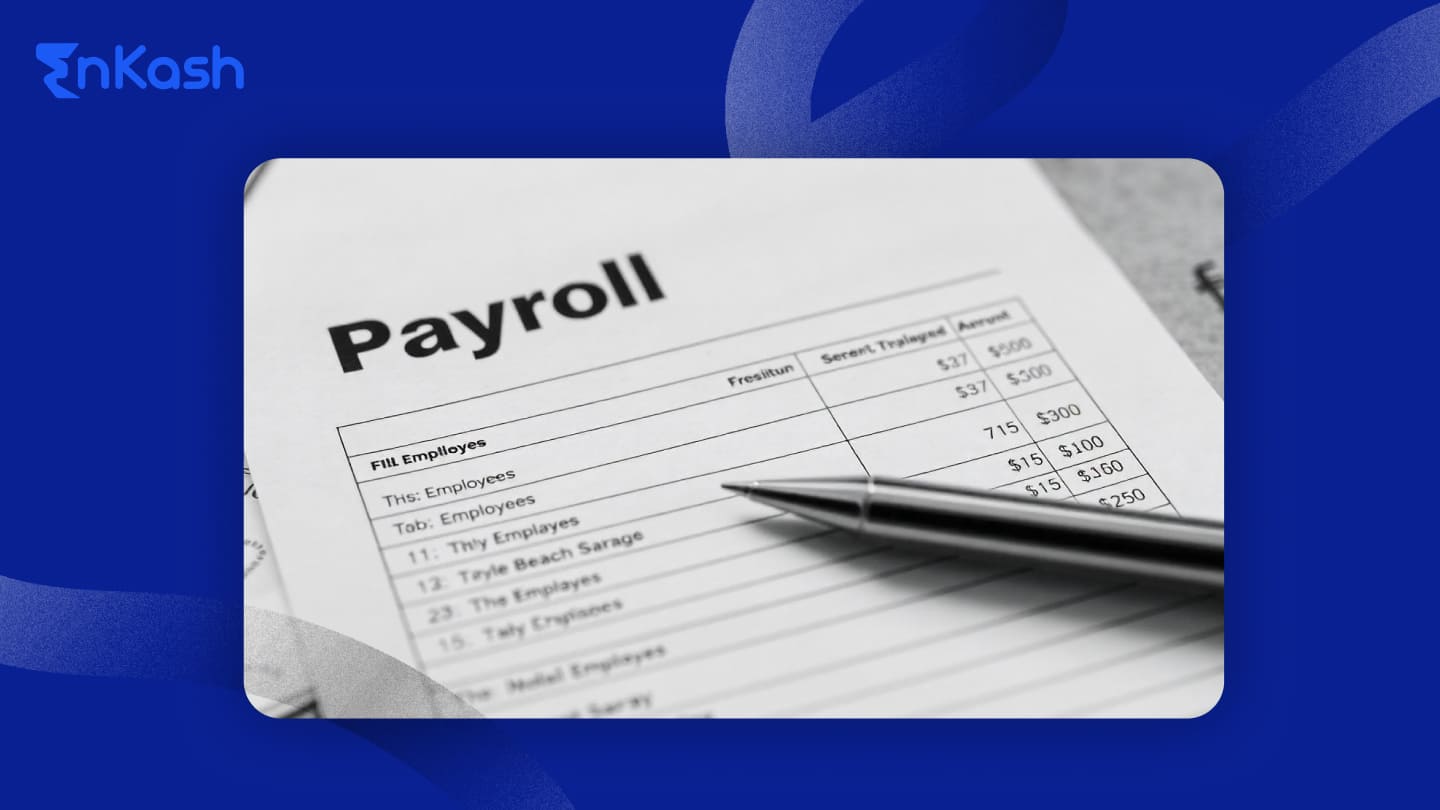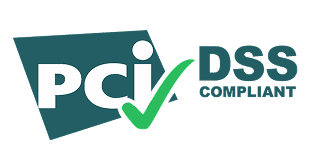What Is Payroll?
Definition
Payroll refers to the complete process by which a business calculates, manages, and pays employee salaries while ensuring compliance with tax regulations. In simple terms, payroll is the system that records employee earnings, deductions, taxes, and net pay for a specific pay period.
The meaning of payroll is beyond just salary disbursement. It includes maintaining accurate employee compensation records, calculating wages and bonuses, deducting taxes and statutory contributions, and ensuring employee salaries are paid accurately and on time.
What is Payroll in HR?
It is one of the most important functions within HR because it deals with how employees get paid. Payroll in HR refers to the function within Human Resources that manages employee salary processing, compensation data, tax deductions, and salary-related compliance with finance and accounting teams. In HR, payroll ensures that employees are paid accurately, on time, and in line with company policies and labor laws. In India, payroll must align with statutory requirements such as TDS, PF, ESI, and professional tax, depending on eligibility.
Payroll in HR is the structured process of converting employee-related data—such as attendance, leaves, overtime, bonuses, and salary structure—into accurate salary payments. It acts as a bridge between employee lifecycle management and financial compensation.
Components of Payroll
It isn’t just about the final salary figure; it’s made up of several parts that together determine what each employee earns and what gets deducted. Understanding these components helps ensure clarity and fairness in how pay is managed.
Here are the main elements:
Component |
Description |
|---|---|
Basic Salary |
The fixed part of an employee’s pay that forms the base for calculating other benefits. |
Allowances |
Extra payments such as travel, housing, or medical allowance are provided to cover specific expenses. |
Bonus / Incentives |
Additional pay is given for good performance, achievements, or meeting targets. |
Deductions |
Amounts are reduced from the salary for statutory or company-specific reasons, such as provident fund (PF), professional tax, or loans. |
TDS (Tax Deducted at Source) |
The income tax amount is deducted by the employer from an employee’s salary before payment, as per applicable government tax slabs. |
Net Salary (Take-Home Pay) |
The final amount an employee receives after all deductions. |
Together, these components form the structure of every employee’s pay and ensure transparency in salary management.
What Is Payroll Processing?
Payroll processing is the systematic and recurring process through which an organization calculates employee salaries, applies statutory deductions, and disburses net pay for a specific pay period. In simple terms, payroll processing ensures employees are paid accurately, on time, and in compliance with labor and tax laws.
The meaning of payroll processing lies in converting employee-related inputs such as attendance, leaves, overtime, incentives, and salary structure into final salary payments, along with legally required deductions and filings.
For businesses, payroll processing is not just a salary payout activity—it is a compliance-critical operational workflow that connects HR data, financial controls, and statutory reporting.
Payroll Process Steps
Managing it involves more than just paying salaries. It’s a structured process that ensures every employee is paid correctly, compliance requirements are met, and records are maintained for future reference.
Here’s a simple breakdown of the key steps:
- Data Collection
The process starts with gathering employee details such as attendance, leave records, overtime, incentives, and any changes in salary or deductions. - Calculation of Gross Pay
Based on the basic salary, allowances, and incentives, the total earnings for each employee are calculated before deductions. - Applying Deductions
Statutory deductions like PF, TDS, professional tax, and any company-specific deductions, such as loans or advances, are subtracted from the gross pay. - Salary Disbursement
Once the net amount is finalized, salaries are transferred to employees’ bank accounts through payroll software or online banking systems. Payslips are also generated for transparency. - Compliance and Reporting
After disbursing salaries, employers must deposit deducted taxes and contributions (like PF and TDS) with the relevant government departments and file periodic returns. - Record Keeping
Maintaining accurate payroll records ensures compliance and helps during audits or employee queries.
Methods of Payroll Processing
Organizations use different payroll methods based on their size, workforce, and resources. Each method involves calculating salaries, deductions, and benefits while ensuring accuracy and compliance.
1. Manual Payroll
This is the simplest form of payroll, where calculations are done manually using registers or spreadsheets. It works for very small teams but can be time-consuming and prone to errors.
2. Spreadsheet-Based Payroll
Some companies use semi-automated systems such as Excel to calculate salaries. By adding formulas for attendance, allowances, and tax deductions, they can compute the payroll figures automatically. While it saves time compared to manual methods, it still carries the risk of human error.
3. Automated Payroll Software
Payroll software helps calculate salaries, apply deductions, generate payslips, and handle compliance automatically. It minimizes manual effort, ensures accuracy, and integrates easily with attendance or HR systems.
4. Outsourced Payroll Services
Many businesses partner with payroll companies that manage salary processing, tax deductions, and filings on their behalf. Outsourcing allows HR teams to focus on strategic work while experts handle compliance and updates in payroll laws.
5. Cloud-Based Payroll Systems
Modern organizations prefer cloud-based solutions that can be accessed anytime and anywhere. These systems automatically update tax rules, maintain data security, and support distributed teams across locations.
Importance of Payroll in HR
It plays an important role in how an organization functions. It ensures that employees are paid correctly, statutory rules are followed, and financial records remain accurate. A well-managed payroll system helps maintain consistency, transparency, and trust within the workplace.
1. Employee Satisfaction and Retention
Accurate and timely salary payments are one of the main reasons employees stay motivated. A clear employee payroll process helps build trust and reduces conflicts related to payment errors or delays.
2. Compliance and Legal Accuracy
It ensures that deductions such as TDS, PF, and professional tax are managed according to government regulations. This keeps the company compliant and prevents legal or financial issues.
3. Financial Clarity and Planning
Proper payroll management helps HR and finance teams understand total payroll amounts, track expenses, and plan future budgets effectively. It supports better decision-making and cost management.
4. Efficient HR Operations
An organized payroll process allows HR teams to handle employee records, leave, and benefits more efficiently. It reduces manual work and ensures accuracy in every step.
5. Organizational Reliability
Timely and accurate salary payroll reflects the company’s reliability and professionalism. It strengthens the organization’s reputation among employees and external stakeholders.
Payroll connects employee satisfaction, compliance, and financial discipline, making it one of the most critical HR functions.
Payroll in HR vs Payroll Accounting
Payroll accounting refers to the financial recording, classification, and reporting of payroll transactions in the company’s books of accounts. It ensures that salaries, wages, taxes, and statutory contributions are correctly recorded as expenses and liabilities. Payroll in HR focuses on employee-related data and people operations. HR payroll ensures that salary processing accurately reflects attendance, leaves, incentives, bonuses, and salary structures based on company policies and employment contracts.
Key Difference Between Payroll in HR and Payroll in Accounting
Aspect |
Payroll in HR |
Payroll Accounting |
Meaning |
Payroll in HR refers to managing employee compensation data and ensuring salaries reflect attendance, leaves, incentives, and HR policies |
Payroll accounting refers to recording payroll transactions in financial books and ensuring statutory and tax compliance |
Primary Objective |
Accurate and timely salary processing for employees |
Accurate financial reporting and compliance |
Owned By |
Human Resources (HR) team |
Finance or Accounting team |
Key Focus |
People operations and employee experience |
Financial control and audit readiness |
Core Responsibilities |
Managing employee master data, attendance, leave records, salary structures, bonuses, and reimbursements |
Booking salary expenses, calculating tax liabilities, statutory deductions, and maintaining payroll ledgers |
Data Source |
HR systems, attendance tools, leave management records |
Payroll reports, salary registers, compliance filings |
Compliance Role |
Ensures payroll aligns with company policies and labor laws |
Ensures adherence to tax laws, statutory filings, and accounting standards |
Business Impact |
Improves employee trust, satisfaction, and retention |
Ensures financial accuracy, compliance, and risk reduction |
Reporting Output |
Payslips, employee payroll reports, HR dashboards |
General ledger entries, tax reports, statutory returns |
Tools Used |
HRMS, attendance systems, payroll applications |
Accounting software, compliance tools, payroll reports |
Risk of Errors |
Employee dissatisfaction and payroll disputes |
Financial penalties, audit issues, compliance failures |
Payroll Calculation: The Basic Formula
Payroll calculation involves arriving at an employee’s net salary from their gross earnings.
Payroll Formula:
Salary = (Basic Pay + Allowances + Bonuses) – (Deductions + Taxes and Statutory Contributions)
A clear calculation process helps HR maintain transparency and ensures every employee receives the correct pay. The method an organization chooses—manual, automated, or outsourced—depends on its team size, budget, and compliance needs.
Payroll Compliance and Legal Requirements in India
Payroll compliance refers to a company’s responsibility to follow internal policies and external statutory laws while processing employee salaries. It ensures that employees are paid fairly and on time, that statutory deductions are correctly applied, and all legal obligations are met properly.
For businesses, payroll compliance is not optional. It helps avoid penalties, reduce legal risk, protect employee rights, and maintain organizational credibility. Below are the key payroll compliance and legal requirements that companies in India must follow.
1. Minimum Wage Laws
Minimum wage laws define the lowest amount an employer is legally liable to pay an employee. In India, minimum wages vary based on:
- State
- Industry
- Skill level and nature of work
- These laws are applicable to full-time, part-time, and contract workers.
Key Compliance Point:
Failure to comply with minimum wage regulations can lead to penalties, fines, and legal action. Employers must regularly track state-wise wage revisions to remain compliant.
2. Provident Fund (PF) Contributions
The Employees’ Provident Fund (EPF) is a mandatory social security benefit governed by the EPFO. Both employer and employee contribute a fixed percentage of the employee’s basic salary.
- Employee contribution: 12% of basic salary
- Employer contribution: Typically 12% of basic salary plus dearness allowance, with the employer share split between EPF and EPS as per EPFO rules
Employers must deduct the employee’s share from the salary and deposit both contributions with EPFO within the prescribed timelines.
Key Compliance:
Delayed or missed PF deposits attract interest, penalties, and compliance notices.
3. Employee State Insurance (ESI)
Employee State Insurance (ESI) applies to eligible employees earning up to ₹21,000 per month (as per coverage rules).
- Employer contribution: 3.25%
- Employee contribution: 0.75%
The scheme covers medical care for employees and their dependents.
Key Compliance:
ESI compliance is mandatory. Non-compliance can result in legal proceedings and financial liabilities to the employer.
4. Professional Tax
Professional Tax is a state-level tax deducted by employers from employee salaries. The rate and slabs vary by state, with an annual cap of ₹2,500.
Employers are responsible for:
- Registering under state professional tax laws
- Deducting the correct amount
- Making timely payments to the state government
Key Compliance:
Non-registration or delayed payments can lead to penalties and interest charges.
5. Tax Deduction at Source (TDS)
Under the Income Tax Act, employers must deduct TDS on salary based on:
- Employee income
- Applicable tax slabs
- Declared exemptions and deductions
- The deducted TDS must be deposited with the government and reported through periodic TDS returns.
Key Compliance:
Failure to deduct, deposit, or file TDS returns can result in fines, penalties, and prosecution.
6. Bonus and Gratuity Payments
Indian labor laws mandate bonus and gratuity payments under specific conditions:
- Payment of Bonus Act, 1965: Minimum bonus of 8.33% of annual salary, subject to eligibility
- Payment of Gratuity Act, 1972: Gratuity is payable after at least five years of continuous service, except in cases of death or disablement where the five-year condition does not apply
Key Compliance:
Timely and accurate payment of bonus and gratuity prevents labor disputes and ensures statutory compliance.
7. Payroll Record-Keeping and Audits
Employers must maintain detailed payroll records, including:
- Salary registers
- Payslips
- Statutory deductions
- Details of bonus and allowance
- Records of tax payment
- These records must typically be preserved for 5 to 7 years, depending on applicable laws.
Key Compliance:
Accurate payroll documentation supports smooth audits and protects businesses during regulatory inspections.
Conclusion
It is an essential part of HR that keeps every organization running smoothly. It goes beyond salary payments, covering calculations, deductions, compliance, and record-keeping. When managed correctly, payroll ensures that employees are paid accurately and on time while meeting all legal and statutory requirements.
A well-structured payroll system builds employee trust, maintains transparency, and helps businesses stay financially organized. With the right tools and processes in place, payroll can shift from a routine task to a strategic function that supports employee satisfaction and business growth.
In short, effective payroll management reflects how responsibly an organization operates, balancing people, compliance, and performance.
FAQs
1. What is the role of payroll in HR management?
Payroll in HR management calculates and pays employee salaries, manages tax deductions, and ensures labor laws are followed. Its objective is to ensure employees are paid rightfully as well as on time, thereby guaranteeing their satisfaction and a well-functioning organization.
2. How does payroll compliance affect businesses?
Payroll compliance ensures that organizations comply with the taxes, safety, and employment regulations. Non-compliance can lead to charges, fines, and reputational damage. Periodic audits can help businesses stay on track.
3. Can payroll be outsourced, and what are the benefits?
Yes, payroll management can be outsourced to specialized service providers. Outsourcing can help free up the administrative resources of the company, improve accuracy, and allow businesses to leverage the latest payroll management features without the need for an in-house expert.
4. What is the difference between gross and net pay in payroll?
Gross pay refers to the pay before any deductions for taxes, insurance, or retirement. Net pay, also known as take-home pay, is the amount one receives after all deductions.
5. What is payroll automation, and why is it important?
Payroll automation involves using tools to automate tasks such as salary calculation, tax deductions, and filings. It can reduce human errors, save time, and help businesses comply with legal regulations.
6. How does payroll impact employee retention?
Precise and prompt payroll creates trust among employees and improves job satisfaction. This, in turn, helps them feel secure and encourages them to work and grow with the same company.
7. What taxes are typically included in payroll deductions?
In India, payroll deductions commonly include income tax (TDS), provident fund (PF), employee state insurance (ESI, where applicable), professional tax (state-specific), and other authorised deductions such as loan recoveries. These deductions can change as per the country’s rules and the company’s policies.
8. What are the common challenges faced in payroll processing?
Complex tax regulations, changes in labor laws, coping with payroll errors, and filing timely reports are some of the challenges in payroll processing. Using payroll software or outsourcing payroll can help overcome these challenges.
9. What information is typically included in a payroll report?
A payroll report typically shows the names of employees, gross salaries, tax deductions, benefits, overtime, and net pay. These reports can be used for financial reporting and compliance.
10. How often should payroll be processed?
Payroll can be processed every week, every two weeks, or every month, depending on how often a company pays its employees. Regular payroll processing ensures employees are paid on time and business operations run smoothly.
11. What is Payroll in Accounting?
Payroll in accounting is the process of calculating, recording, and managing employee compensation in a company’s financial records. It includes wages and salaries, bonuses, overtime, deductions (such as taxes and provident fund), and employer contributions. Payroll accounting ensures employees are paid accurately and on time while keeping the business compliant with tax and labor regulations.
12. What are the components of Payroll?
The components of payroll include all elements that make up an employee’s salary and deductions. These typically consist of basic salary, allowances (such as HRA and conveyance), bonuses or incentives, overtime pay, statutory deductions (like income tax, PF, ESI, and professional tax), non-statutory deductions, employer contributions, and the final net pay (take-home salary) paid to the employee.








